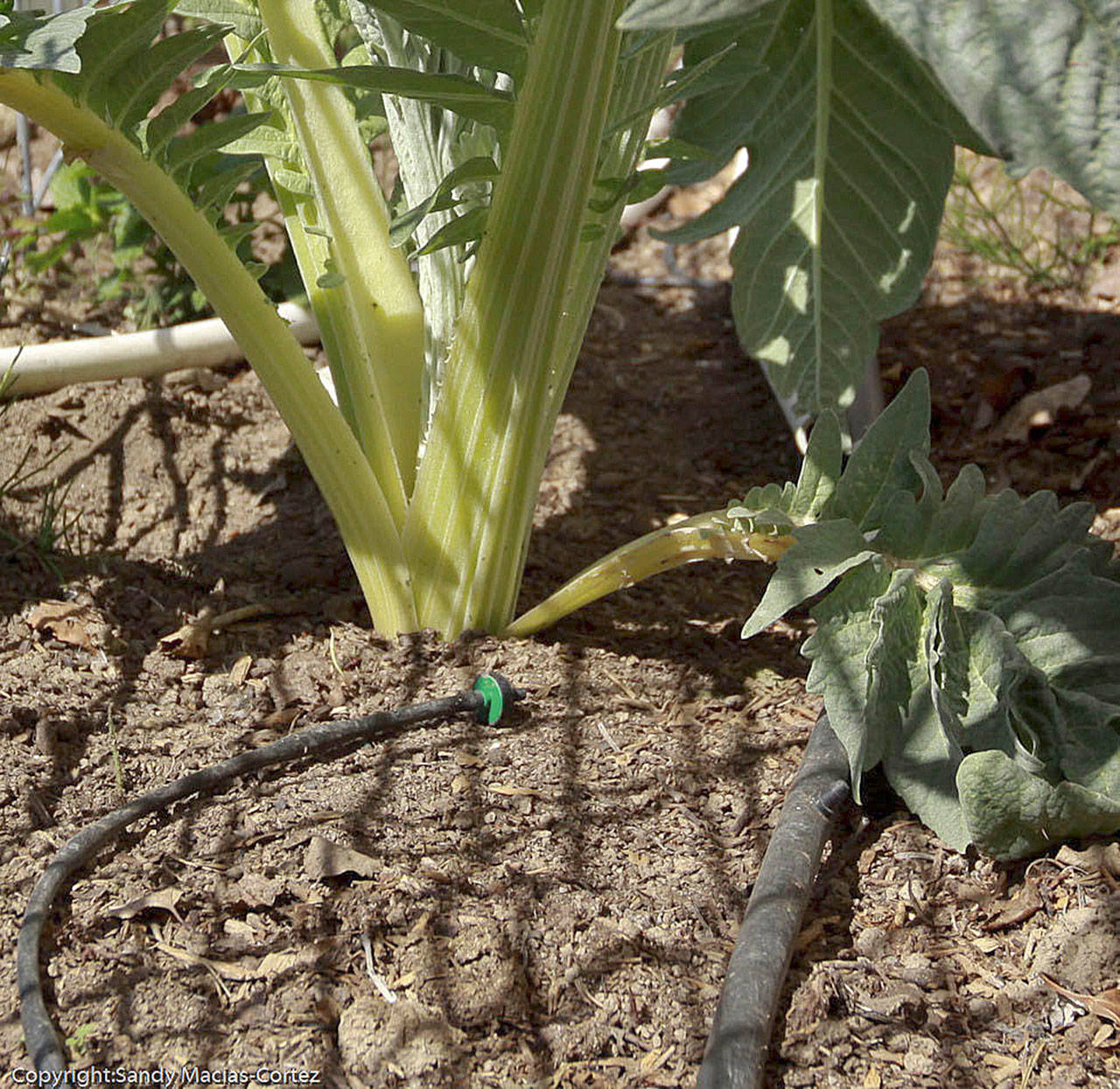After plentiful sun and rich soil, water is the third most important element in the garden. Yet, it is often the least considered. If vegetable gardens are water stressed, a decrease in vitality and yield may result. Landscape plants that are chronically over- or under-watered perform poorly and are more susceptible to disease, pests and failure.
The North Olympic Peninsula gets very little rain during the summer growing season so a watering plan is a good investment in time and money.
A water plan does not have to be expensive or complicated. It can be as simple as attaching a manual timer on a soaker hose. The importance of a timer for any method of watering cannot be understated. Both plant and property damage can occur from water unintentionally left unattended.
There are many good reasons to consider setting up a simple drip system. A drip system can be 90-95 percent efficient, compared to hand watering. It will save time and labor, even operating automatically while you are on vacation. Perhaps the most compelling reason is the increased health of your garden.
Drip systems that direct the water only to the root zone can reduce weeds and disease making for healthier plants. A watering schedule, using an automatic timer, helps provide consistent and adequate moisture during the dry season.
DIY drip systems are affordable and no plumbing or hydrology skills are needed. It can be a fun project. If a professional is used to install a system, be sure to understand how it works and how to maintain and modify it as needed.
Starting simple is the key. Here are a few tips to get started:
There are some great resources available including free “how to” guides at hardware or garden centers that sell drip system supplies. One-stop online stores also have useful guides and videos to help you get started. Get a guide and do a little planning before you buy anything.
For any watering plan it is helpful to sketch the garden on paper. Break out each area that has separate requirements. For example, a vegetable garden will have different water needs than a shrub bed. Each area can be approached, one at a time, as its own project. This sketch should be as detailed as possible noting approximate distances, water sources and plant types.
A basic drip system will include a hose end timer, a backflow preventer (if not already on the faucet), a pressure regulator, a filter (or combination regulator filter), a swivel compression adapter, distribution tubing to carry water to the emitters, and emitters which apply water to the plants.
Emitters control the method, rate and volume of water delivered to the plants. There are all sorts of gadgets, including bubblers, micro sprinklers, misters, foggers, risers, swivels, and more. Choosing the best emitter is one of the hardest parts of a system. Keep it simple, start with one or two types of adjustable emitters. Drip systems are easy to modify so you don’t need to try everything at once.
Although there is a learning curve, it sounds more complicated and expensive than it is. The automatic timer will be the biggest expense but well worth the modest price.
No expensive tools are required but a good tube cutter and hole-punch will make installation a little easier. With the exception of the distribution tubing and emitters, parts will screw together. Distribution tubing is connected to compression adapters by firmly pushing them together. Likewise, emitters are connected with barbed fittings that are pushed into the distribution tubing.
Purchase components from one brand if possible to assure compatibility. Be sure to understand there is a difference between pipe and hose fittings. DIY projects that will connect directly to an outdoor faucet will probably be compatible with hose fittings.
The last tip may be the most important. When setting up drip irrigation, lay out the parts of the system in place. Then, pick it up and do as much of the assembly (connections, fittings and emitters) as possible standing up! Your back and knees will thank you.
Do a little research and consider designing and installing a home drip system. Start small and simple; these systems lend themselves to easy expansion and modification.
Drip irrigation know-how
An excellent resource on Drip irrigation can be found at pubs.extension.wsu.edu. Enter “FS030E” in the search box for the WSU publication “Drip Irrigation for the Yard and Garden.”
• Supplemental watering tips
• Most plants on North Olympic Peninsula need supplemental summer water.
• Frequent, shallow watering leads to shallow roots which leads to stress in hot conditions.
• It is better to water very early in the morning.
• Soil needs to be moist and receive water for added fertilizer to be effective.
• Too much water can be as bad as, or worse than, too little.
• A timer is an essential tool.
• Water is a valuable resource, so conserve when possible and consider drought cycles as part of the climate.
Susan Kalmar is Clallam County Master Gardener.



